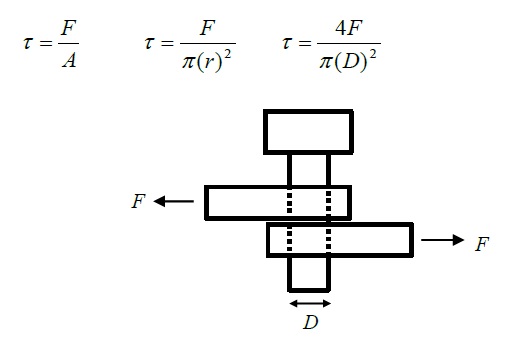Calculating limit stress on a solid pin loaded in shear is straightforward, and there are several handy calculators which will do single shear and even double shear. However, everything I have found assumes that the pin is solid.
For weight savings reasons, one might want to replace a solid pin with a hollow pin. However, stress flow in a hollow object is different from in a solid object, so it seems dangerous to assume that the yield stress is purely inversely proportional to area without consideration of the nature of the cross-section.
How to take into account the cross-section when calculating failure stress in single-shear and double-shear loading for a pin with arbitrary ID? Is it sane/safe to use the existing shear eqn. above with the hollow cross-section area and then bump the required safety factor by, say, 2x?
UPDATE: The best answer includes design tables and/or guidelines. Pure theoretical approaches are interesting but ultimately unsatisfactory, as 1) they can be easily simulated with FEA as well and 2) they might not include real-world experience.
